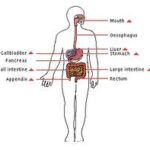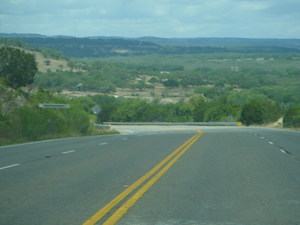Acute pancreatitis is an extremely painful condition that has the potential to be life-threatening if left untreated. Fortunately, several of the signs and symptoms of pancreatitis are specific enough to quickly lead a physician to the correct diagnosis. The diagnosis of acute pancreatitis can be confirmed by elevated levels of the enzymes amylase and lipase, as well as abdominal imaging when necessary.
Symptoms of acute pancreatitis:
1. Abdominal pain- The belly pain of acute pancreatitis is often key to the diagnosis. The pain begins rather suddenly and is often described as a “boring” pain in the middle of the abdomen. Ninety percent of people with pancreatitis describe their epigastric pain as radiating through the belly to the back. Thus, individuals with acute pancreatitis often feel better when leaning forward at the waist.
2. Upset stomach- Many people with acute pancreatitis experience nausea and vomiting.
3. Fever- In some individuals, the nausea and vomiting of acute pancreatitis is accompanied by a low grade fever.
Signs of acute pancreatitis:
1. Abdominal tenderness- Pressing on the stomach of an individual with acute pancreatitis will elicit tenderness that is either diffuse or located in the epigastric area (above the belly button and below the sternum).
2. Decreased bowel sounds- Listening to the belly of an acute pancreatitis patient reveals no, or very infrequent, gurgling bowel sounds.
3. Dehydration- Dehydration associated with pancreatitis can quickly develop into a serious condition. Dehydration will often present as an increased heart rate and low blood pressure but can progress to a very ill shock picture.
4. Grey Turner’s sign- This is only seen in 1-2% of cases of acute pancreatitis. Grey Turner’s sign appears as bruising of the flank (low back/”love handle” area) and results from pancreatic bleeding.
5. Cullen’s sign- This is seen in 1-3% of cases of acute pancreatitis. Cullen’s sign appears as bruising of the perimbilical area (around the belly button) and is also from pancreatic hemorrhage.
The vast majority of cases of pancreatitis are caused by two common conditions: gallstones and alcohol abuse. Other less common conditions that cause pancreatitis include the use of NSAIDs such as ibuprofen, diuretics such as Lasix or HCTZ, and steroids. Autoimmune conditions like Polyarteritis nodosa “PAN” and Systemic Lupus Erythmatosus “SLE” can cause acute pancreatitis as well.
However, it is also important to note that many of the signs and symptoms listed above could be due to conditions other than pancreatitis. These medical conditions are equally as dangerous, if not more so, and require urgent medical attention.
Critical illnesses that can mimic acute pancreatitis symptoms include:
-ruptured aortic aneurysms
-perforated peptic ulcers
-acute appendicitis
-acute cholecystitis (inflammation or infection of the gallbladder)
-myocardial infarction “MI” (heart attack)
-small bowel obstruction
-hepatitis (inflammation or infection of the liver)
-pyelonephritis (inflammation or infection of the kidneys)
Any individual with the signs and symptoms above may have pancreatitis or one of the other potentially life-threatening conditions mentioned and should seek medical care immediately.



